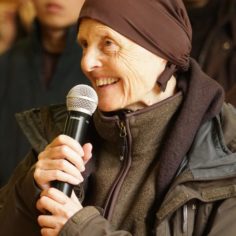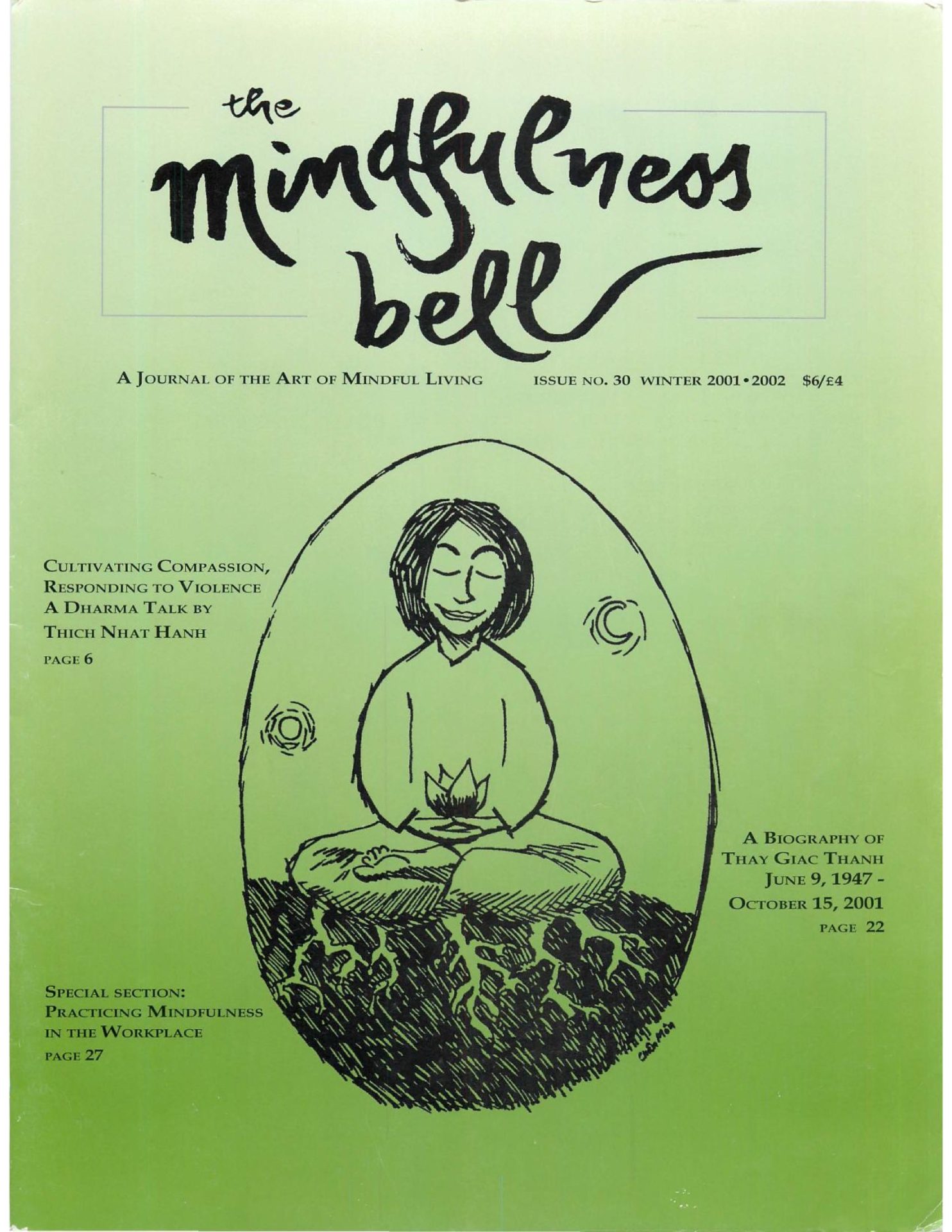Some Suggestions for Order of Interbeing Members
By Sister Annabel Laity in December 2001
Many, many people want to learn about the practice of mindfulness which Thich Nhat Hanh teaches and writes about. They want to practice it and bring it into their lives. Therefore they want authentic Dharma teachers who can be their good friends guiding them on the path and showing them ways to practice.
Some Suggestions for Order of Interbeing Members
By Sister Annabel Laity in December 2001
Many, many people want to learn about the practice of mindfulness which Thich Nhat Hanh teaches and writes about. They want to practice it and bring it into their lives. Therefore they want authentic Dharma teachers who can be their good friends guiding them on the path and showing them ways to practice. How are we to find and train these teachers? What qualifications should they have? When someone asked Thay what qualifications someone should have to be a Dharma teacher, he replied that a Dharma teacher should be a happy person.
In the monastic tradition, it is only five years after receiving the full ordination that someone can be regarded as a Dharma teacher. Of course if we are really to succeed in transmitting the Dharma doors we have to have that kind of happiness which is based in solidity and freedom. Our solidity comes from total immersion in the practice, twenty-four hours a day. The practice is not something which can be switched on and off. It is not possible to succeed if we only practice when a formal retreat is organized for outsiders and on the days when there is no retreat we fall into forgetfulness, running after things which cannot bring us real happiness and allowing our body and mind to consume toxins. We have to practice very day, three hundred and sixty days per annum. It is suggested that when we have received the Fourteen Mindfulness trainings of the Order of Interbeing, we practice sixty days of mindfulness every year, but teaching the Dharma is something we do by practicing mindfulness everyday. We teach by the way we walk, we eat and we conduct ourself from moment to moment.
A monastery can be organized in such a way as to make practicing twenty-four hours a day possible. There are always brothers and sisters close by us to remind us when we forget. There is the daily schedule, the fine manners and the clock, the bell, the telephone. After five years of training like this we can have the solidity to teach the Dharma. Once we receive the transmission we obviously must continue the training day in and day out for as long as we live. Once we cease to train we cease to teach because we teach with our body and our person more than we teach with our words. It looks strange if our daily life is not in accord with our words. Our friends and our students only expect two things of us: our solidity and our freedom. Those are the only things that we want to transmit and the only things which are worth transmitting.

For a lay Dharma teacher in the Order of Interbeing it is the same; the training is lifelong and takes place twenty-four hours a day. It is best if a lay Dharma teacher can live year-round in a lay or monastic practice center which is organized as a real mindfulness community or Sangha body where people do not live separate lives as private individuals. Failing this, we have our root center to return to for as many months of the year as we are able. When we are ordained as a member of the Order of Interbeing, there is the root center from which we are ordained. It is like our family home and we are always refreshed and happy when we can return there. You may consider Plum Village to be your root practice center or Deer Park Monastery or Green Mountain Dharma Center. We always need that root to return to and inspire us with renewal in our practice. When we become a Dharma teacher or we establish a local Sangha, our local Sangha also becomes a root for the people who are introduced to the practice there. It would be a pity if we could not return to our root practice center of ordination in order to keep the link between our local Sangha and our root practice center alive. Lay Dharma teachers are encouraged to come back to Plum Village, Green Mountain Dharma Center and Deer Park whenever they can and scholarships will be available for such periods of practice and retreat. Those who have been nominated as Dharma teachers in training also have the same access to their root practice center.
For lay centers of practice there is already the Interzein Center in Germany and the Clear View Practice Center in Santa Barbara, U.S.A. A lay village as part of Plum Village in France is also under serious consideration. These centers are also roots for many people and their founders also have their roots to return to.
Please refer to the guest master or guest mistress of your root center for details of how it is possible to stay there for extended periods of time.
Sister Annabel, True Virtue, is the abbess of Green Mountain Dharma Center in Vermont.


